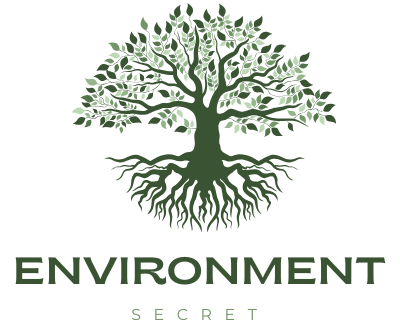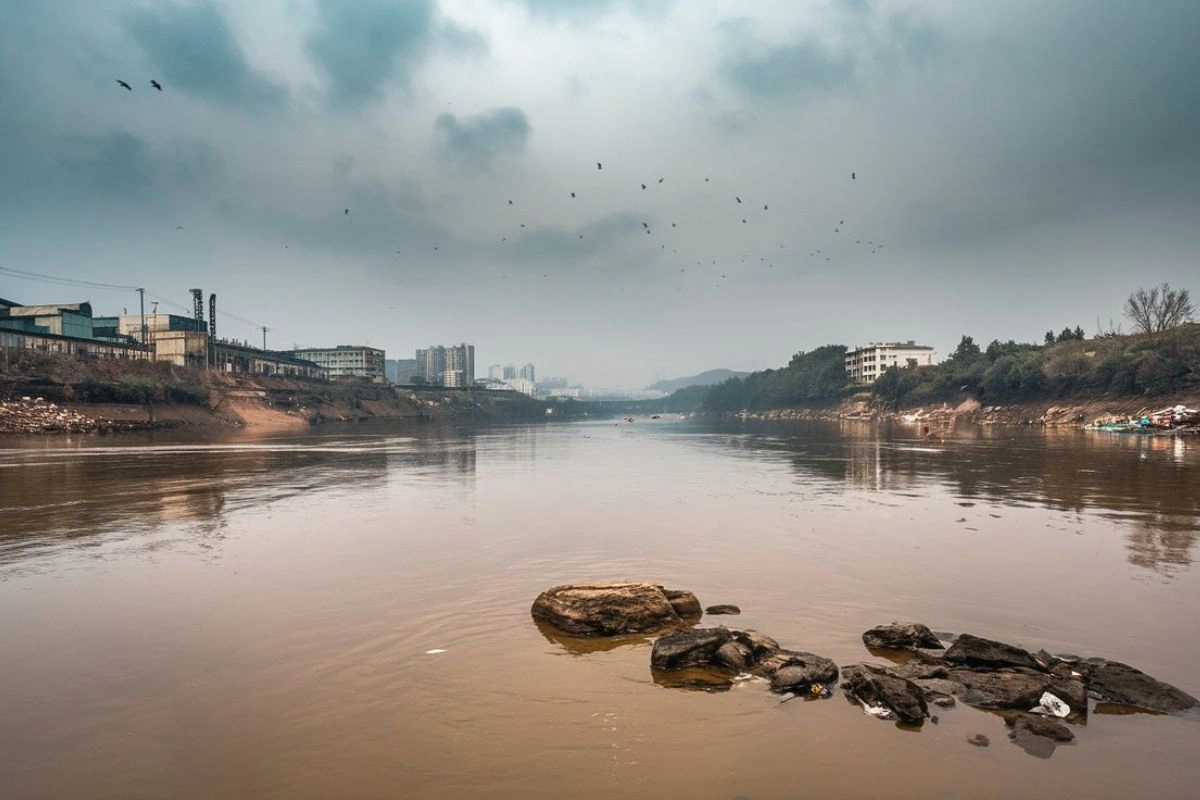Water pollution stands as one of the most significant global challenges in our modern world. It directly affects the environment, public health, and economies, posing a grave threat to ecosystems and human well-being. Defined as the contamination of water bodies by harmful substances, water pollution reduces the usability of water for drinking, agriculture, recreation, and industry. With rapid urbanization, population growth, and industrialization, the problem has escalated, demanding urgent attention and action.
In this detailed article, we’ll explore the causes, types, consequences, and solutions to water pollution, providing a comprehensive understanding of its global impacts and the measures required to mitigate it.
1. Introduction to Water Pollution
Water is essential for life, and its quality directly impacts health, ecosystems, and development. However, water pollution undermines this critical resource, affecting nearly every aspect of human and environmental systems. According to the United Nations, over 2 billion people lack access to safe drinking water, and contaminated water contributes to diseases responsible for millions of deaths annually.
The issue of water pollution is not confined to any single region but is a global phenomenon affecting both developed and developing nations. Addressing this challenge requires comprehensive strategies, including regulation, education, innovation, and global cooperation.
2. Understanding Water Pollution
Definition and Scope
Water pollution occurs when harmful substances such as chemicals, pathogens, or waste materials contaminate water bodies, rendering them unfit for use. These pollutants originate from both natural processes and human activities, disrupting aquatic ecosystems and endangering human health.
Types of Water Pollution
- Surface Water Pollution: Contamination of rivers, lakes, and oceans due to pollutants like industrial waste, plastics, and oil spills.
- Groundwater Pollution: Contamination of underground water sources through leaching of chemicals from landfills, agricultural fields, or septic systems.
- Marine Pollution: Pollution of seas and oceans, often caused by plastic debris, oil spills, and chemical runoffs.
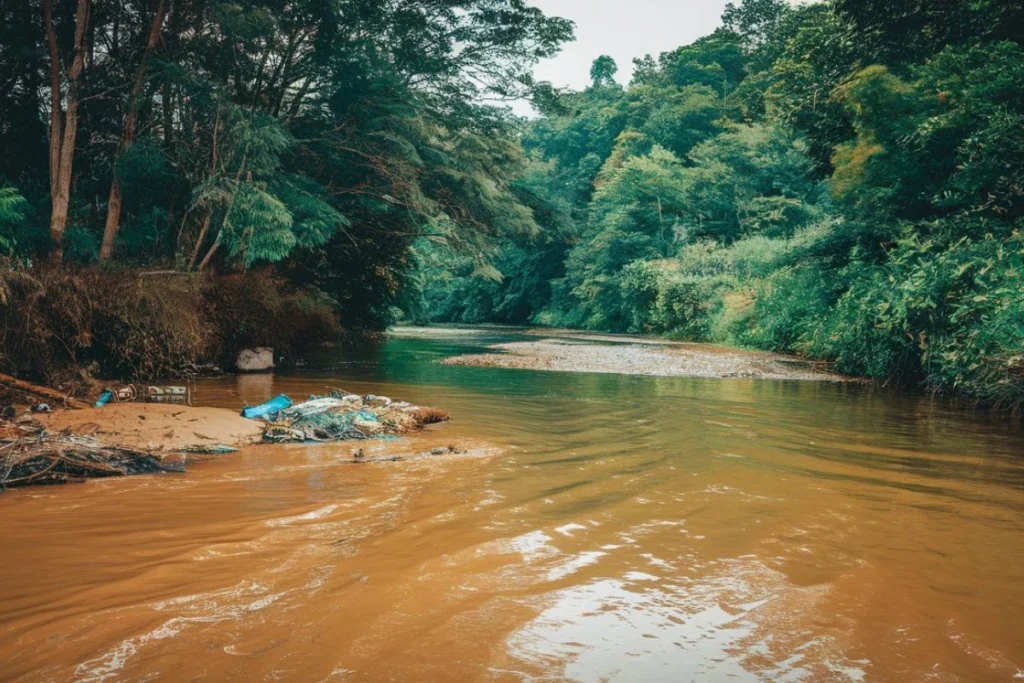
3. Causes of Water Pollution
Natural Causes
- Volcanic Eruptions: Volcanic activity releases ash and gases that can contaminate water bodies.
- Sedimentation: Erosion of soil into rivers and lakes can alter water quality.
- Natural Disasters: Hurricanes and floods spread pollutants into clean water sources.
Human-Induced Causes
- Industrial Activities: Factories discharge untreated chemicals, heavy metals, and heat into nearby water bodies.
- Agricultural Practices: Runoff from fertilizers, pesticides, and animal waste contaminates both surface and groundwater.
- Urbanization: Improper disposal of sewage and garbage pollutes rivers, lakes, and oceans.
- Oil Spills: Accidental spills during transportation or extraction severely impact marine ecosystems.
- Mining Activities: Mining operations often release toxic chemicals like mercury and arsenic into surrounding water.
4. Types of Pollutants in Water
Chemical Pollutants
- Pesticides and Herbicides: Widely used in agriculture, these chemicals leach into water bodies and harm aquatic ecosystems.
- Heavy Metals: Metals like lead, mercury, and cadmium are toxic to humans and animals.
- Nutrients: Excessive nitrogen and phosphorus from fertilizers contribute to eutrophication, triggering the growth of algal blooms.
Biological Pollutants
- Pathogens: Bacteria, viruses, and parasites in untreated sewage spread waterborne diseases.
Physical Pollutants
- Plastic Debris: Non-biodegradable plastics accumulate in water bodies, disrupting marine life.
- Sediments: Soil erosion increases turbidity, affecting aquatic plants and animals.
- Thermal Pollution: Heated water from industrial processes lowers dissolved oxygen levels, affecting aquatic species.
5. Consequences of Water Pollution
Environmental Impacts
- Loss of Aquatic Biodiversity: Pollutants harm fish, plants, and other organisms, often leading to extinction.
- Eutrophication: Excess nutrients cause algae overgrowth, depleting oxygen and creating dead zones.
- Habitat Destruction: Contaminated water disrupts delicate aquatic ecosystems.
Human Health Effects
- Waterborne Diseases: Cholera, dysentery, and typhoid are common in areas with polluted water.
- Toxic Exposure: Long-term consumption of contaminated water can cause cancer, kidney damage, and developmental issues.
Economic and Social Consequences
- Loss of Livelihoods: Pollution affects fishing and tourism industries, particularly in coastal regions.
- Healthcare Costs: Treating diseases caused by polluted water strains public health systems.
- Water Scarcity: Pollution reduces the availability of clean water, exacerbating the global water crisis.
6. Major Sources of Water Pollution
- Industrial Effluents: Factories discharge hazardous chemicals directly into water bodies.
- Agricultural Runoff: Fertilizers, pesticides, and animal waste are washed into rivers and lakes.
- Domestic Wastewater: Untreated sewage contaminates freshwater sources.
- Oil and Chemical Spills: Accidental leaks from ships and pipelines severely pollute marine environments.
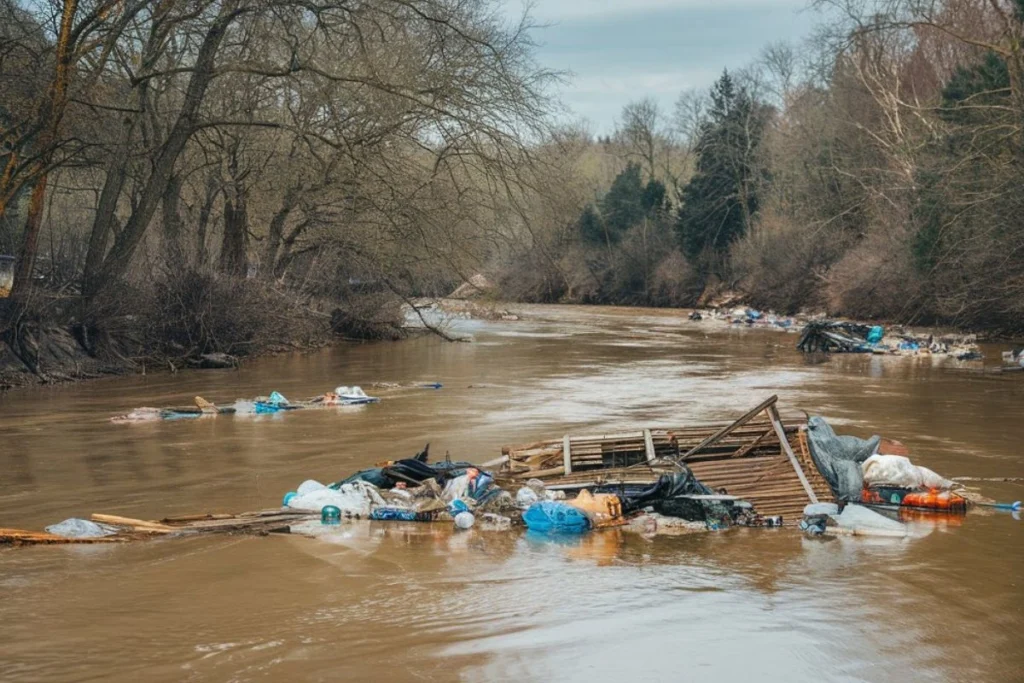
7. Regions Most Severely Affected by Water Pollution
- South Asia: Rivers like the Ganges in India face severe pollution from industrial and domestic waste.
- Africa: Limited access to wastewater treatment facilities leads to widespread contamination.
- Southeast Asia: Plastic pollution and untreated sewage are significant challenges in countries like Indonesia and Vietnam.
8. The Role of Climate Change in Water Pollution
Climate change intensifies water pollution through:
- Rising Temperatures: Warmer water facilitates the growth of harmful algae and pathogens.
- Extreme Weather Events: Floods and hurricanes spread pollutants into clean water sources.
- Sea Level Rise: Salinization of freshwater aquifers threatens drinking water supplies.
9. Solutions to Water Pollution
Preventive Approaches
- Improved Waste Management: Proper disposal and recycling of waste reduce contamination.
- Regulating Industrial Effluents: Enforcing stricter pollution controls for factories.
- Sustainable Farming Practices: Using organic fertilizers and precision agriculture to minimize runoff.
Mitigation Strategies
- Constructed Wetlands: Natural filtration systems trap pollutants and purify water.
- Restoration Projects: Rehabilitating polluted rivers and lakes.
- Enhanced Sewage Treatment: Upgrading facilities to remove contaminants more effectively.
10. Technological Innovations for Water Purification
- Reverse Osmosis: A filtration method that removes impurities from water.
- Nanotechnology: Advanced materials that filter pathogens and chemicals at the molecular level.
- Smart Monitoring Systems: Real-time water quality sensors enable rapid detection of pollutants.
11. Community-Driven Initiatives to Combat Water Pollution
- Awareness Campaigns: Educating communities about the importance of clean water and proper waste disposal.
- Rainwater Harvesting: Collecting and storing rainwater to reduce dependency on polluted sources.
- Volunteer Cleanup Drives: Local efforts to remove trash and debris from water bodies.
12. Global Policies and Agreements Addressing Water Pollution
- The Clean Water Act (USA): Aims to restore and maintain water quality in rivers and lakes.
- United Nations Sustainable Development Goals (SDGs): Goal 6 focuses on clean water and sanitation for all.
- The Paris Agreement: Addresses climate change impacts on water resources.
13. Case Studies of Successful Water Pollution Management
Singapore’s Water Recycling Program
Singapore has developed advanced water treatment systems to recycle wastewater for industrial and drinking purposes.
The Thames River Revival (UK)
Stringent pollution control measures have transformed the Thames from one of the world’s most polluted rivers to a thriving ecosystem.
14. Challenges in Tackling Water Pollution
- Limited Infrastructure: Many regions lack adequate facilities for wastewater treatment.
- Weak Enforcement: Poor regulation allows industries to pollute without consequences.
- Rising Plastic Pollution: Despite awareness, plastic waste continues to grow globally.
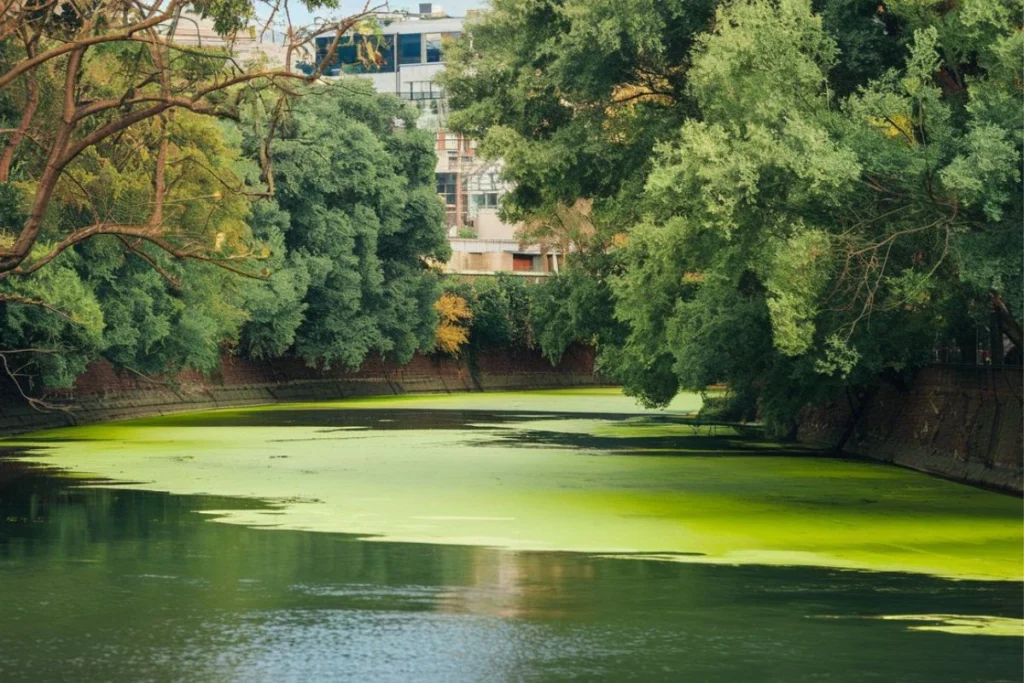
15. Future Outlook and Recommendations
The future of combating water pollution hinges on collective action, technological innovation, and stricter global policies. As urbanization and industrial activities continue to grow, addressing water contamination will require robust infrastructure for wastewater treatment and sustainable waste management practices. Advanced technologies, such as nanofiltration, real-time water quality monitoring, and desalination, offer promising solutions for improving water purity.
Global cooperation is crucial. Strengthening international agreements like the UN Sustainable Development Goals (SDG 6) can drive efforts to provide clean water and sanitation for all. Governments should enforce stricter regulations on industrial discharges and promote eco-friendly agricultural practices to reduce runoff.
Public education and community involvement are equally vital. Encouraging individuals to minimize plastic use, conserve water, and participate in cleanup efforts can significantly reduce pollution levels. By prioritizing water protection today, we can ensure safe, sustainable water resources for future generations.
16. Frequently Asked Questions (FAQs)
1. What are the key factors that contribute to water pollution?
Water pollution is primarily caused by industrial discharge, agricultural runoff, improper waste disposal, plastic pollution, and oil spills. Natural factors, such as sedimentation and volcanic activity, also contribute in some cases.
2. How does water pollution affect human health?
Polluted water can lead to waterborne illnesses such as cholera, dysentery, and typhoid. Long-term exposure to toxins, such as heavy metals and chemicals, can lead to chronic health issues, including cancer and neurological disorders.
3. What actions can individuals take to help reduce water pollution?
Individuals can reduce water pollution by minimizing plastic usage, properly disposing of waste, conserving water, and supporting eco-friendly products and practices. Participating in local cleanup efforts can also make a significant impact.
4. Can water pollution be reversed?
Yes, water pollution can be mitigated through advanced wastewater treatment, restoration of ecosystems, strict pollution controls, and sustainable practices in agriculture and industry. Collaborative global efforts are key to reversing its effects.
Conclusion
Water pollution is a critical global issue with far-reaching consequences for ecosystems, human health, and economic stability. It stems from a range of natural and human-induced factors, including industrial discharge, agricultural runoff, and urban wastewater. The effects are devastating, leading to biodiversity loss, waterborne diseases, and significant economic burdens.
Addressing water pollution requires a multifaceted approach involving stricter regulations, innovative technologies, and public awareness. Preventive measures such as sustainable agriculture, proper waste management, and enhanced wastewater treatment are essential. Additionally, community-driven initiatives and global cooperation are vital to safeguarding water resources.
By taking collective action, we can mitigate water pollution, ensure access to clean water, and preserve aquatic ecosystems for future generations. The responsibility lies with governments, industries, and individuals alike to prioritize the health of our planet’s water systems, a foundation for life and development.
